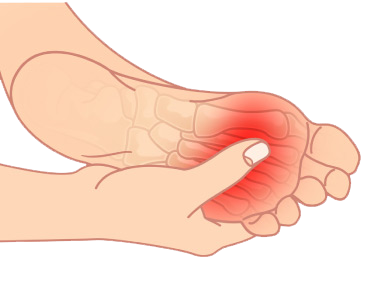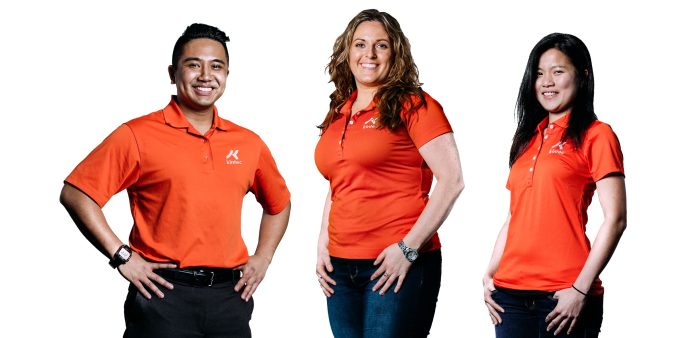
Metatarsalgia (forefoot pain) is a general term for pain felt at the ball of the foot. A Neuroma is inflammation or enlargement of the sheath surrounding the nerve. Neuromas can occur along any nerve but usually appear at the ball of the foot in between the 3rd and 4th toes.
You will see a certified pedorthist who specializes in foot mechanics,
conditions, and conservative treatments.
Symptoms
Metatarsalgia pain usually appears as a dull ache or burning sensation around the ball of the foot. Neuromas can cause numbness or tingling in the toes, or sharp electric-like shocks that shoot up into the leg or down into the toes. The pain usually increases with prolonged standing, walking or running, and subsides when the shoes are removed from the feet. People suffering from metatarsalgia also tend to have clawing or hammering of the toes.
Causes
Foot Mechanics: Normal feet have an arch across the ball of the foot called the metatarsal (or transverse) arch. When this arch falls it places additional pressure on the middle three bones. This fallen arch can also cause these bones to be squeezed together, pinching the soft tissues (nerves and tendons) that are in between and surrounding the bones.
Footwear: Footwear plays an important role. High-heeled shoes place additional weight on the ball of the foot and narrow pointed shoes squeeze the toes together. Footwear like this aggravates these conditions and should be avoided.
Rigid High Arch Feet: This places excessive pressure on the balls of the feet. This foot type can be prone to metatarsalgia and neuroma.
Flexible Flat Feet: With flexible flat feet as the arch of your foot falls, the foot lengthens. This causes excess shearing forces underneath and between the metatarsal bones. This foot type can be prone to metatarsalgia and neuroma.
Individual and Muscular Factors: As we age, much of the protective fat pad under the ball of the foot is lost. Weak foot muscles can cause the transverse (metatarsal) arch to collapse. Tight calf muscles promote early heel lift during walking. This places more stress on your forefoot. Weight gain also increases the stress on the ball of the foot.
Activities and Training Methods
In some sports, athletes are made to spend additional time on the balls of their feet. Ballerinas and sprinters are particularly susceptible, as are football players as they crouch on the line of scrimmage.
Treatment
Early treatment is essential. You should combine as many treatments as possible to obtain the best results. If poor foot function is involved, then long-term treatment is generally aimed at reducing the pressure on the forefoot and supporting the metatarsal arch. In the event of a severe neuroma, surgery may be required. It is usually done only as a last resort.
Medication
Such as anti-inflammatories (NSAID) may be prescribed by your doctor to reduce the pain and inflammation.
Proper Footwear
Eliminate high heels and narrow pointed toed shoes. Look for lower, wider fitting shoes that stretch easily to relieve pressure across the ball of the foot. Shoes that offer increased cushioning will help to protect your feet.
Metatarsal Pads
These pads can be placed in your shoes to re-establish the transverse arch. They can improve the alignment and help to relieve pressure on the nerves and soft tissues.
Custom Foot Orthotics
Orthotics play an important role when the cause of the pain is the result of poor foot function. They help to support and align your foot in a mechanically correct position and alleviate stress on the metatarsal heads and joints. This helps to protect your foot from damage caused by simple daily activity. Frequently, metatarsal pads are placed directly into the orthotic.
Physiotherapy
Can also help reduce the pain and inflammation. Specific exercises may be prescribed to help strengthen any weak foot muscles.
Prevention
Early recognition and treatment can prevent the condition from progressing. If you are experiencing pain, consult your physician. They may refer you for a biomechanical assessment of your feet to start conservative treatment early.
For more reading on forefoot pain, read more from Kintec:
You will see a certified pedorthist who specializes in foot mechanics, conditions, and conservative treatments
or visit us in-store


